Cordoba is well known for the marvellous patios that you can find in every corner of the city. Wherever you go you can catch glimpses of beautifully designed courtyards, and once a year - during the Patio Festival - visitors from all over the world can take a tour of those patios.
But there is a place where you can visit some of Cordoba's most beautiful and historical patios all year long: the Palacio de Viana.
From palace to museum
Although it is called a palace now, the Palacio started as a stately home. Over time, the aristocratic families who came to possess the building transformed it into a Renaissance palace. It was named 'Palacio de Viana' after the last family to live in the palace: the marquises of Viana.
When they put the palace up for sale in 1980, there was an outrage among the people of Cordoba. They felt the palace should become city heritage. After organising a petition, they convinced the Province of Cordoba to buy it. Nowadays the palace is a museum where you can see some beautiful artwork that was property of the marquises, but its main attraction is the natural beauty of the patios of course.
The 12 patios each have their own distinct style and features. Let's take a tour of the patios and the garden of the Palacio de Viana.
1. Patio de Recibo
The Patio de Recibo (Reception Courtyard) was added to the palace in the 16th century. The inhabitants at the time wanted an impressive entrance that reflected their elevated status, and that is exactly what it does!
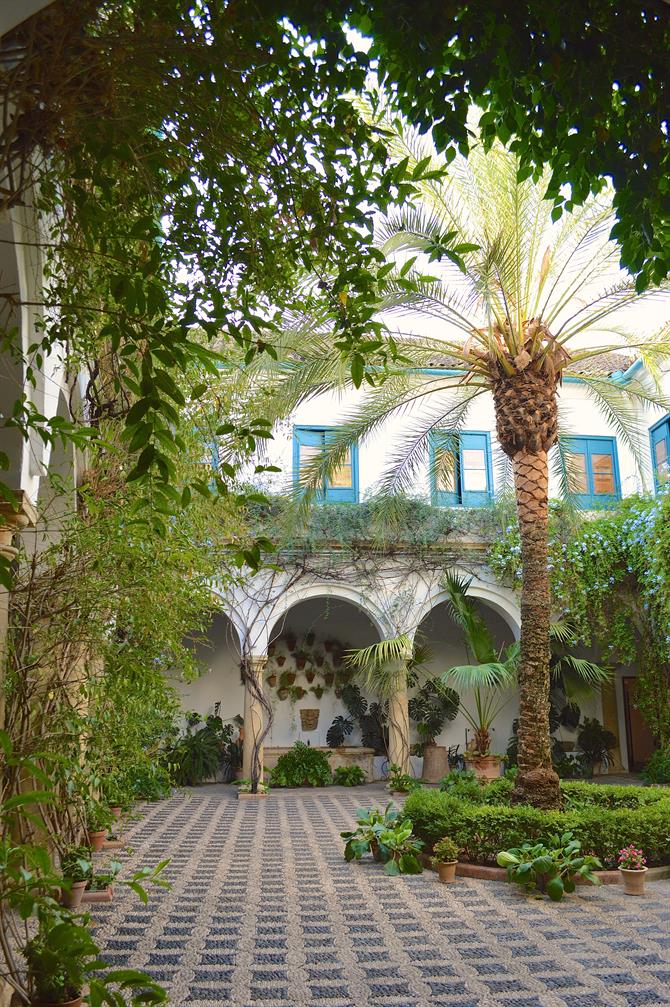
The palm tree in the middle and the plants climbing up the walls give the illusion that the patio has a roof made of leafs and vines. The columns that go around the patio add to the luxurious feel. It feels as if at any given time, the gates to the street may open and a carriage would enter with guests ready to enjoy a dinner party with the marquis and his family.
2. Patio de Gatos
The Patio de Gatos (Cats' Courtyard) used to belong to some small houses that adjoined the Palacio. They were bought and rented out by the owners of the palace in the 16th century, and 2 centuries later they were added to the palace, together with their patio. Thanks to the documents of the transaction it was proved that the Patio de Gatos is the oldest documented communal patio of Cordoba.
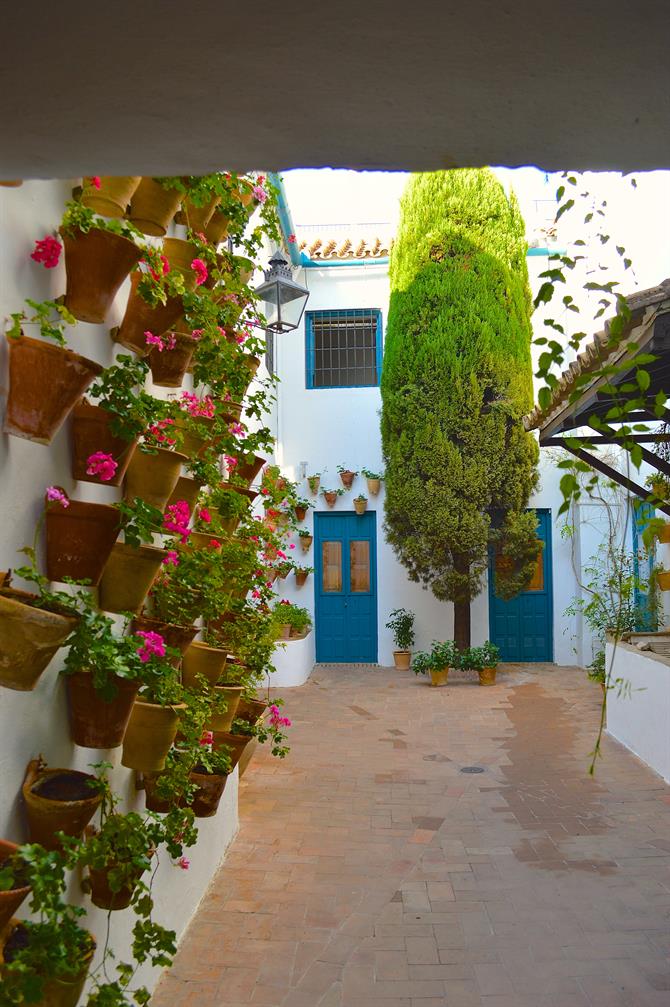
3. The Patio de los Naranjos
The Patio de los Naranjos (Orange Tree Courtyard) used to be the entrance of the palace before the Patio de Recibo was built. This is probably one of the most private patios, and it has an almost soothing effect on visitors. One of its walls is completely covered with the vines of a climbing plant, blocking out any sound that may come from outside. The orange trees in the middle of the patio are definitely the focal point, and in March and April their blossoms disperse their heavenly smell throughout the patio.
4. Patio de las Rejas
The Patio de las Rejas (Courtyard of the Bars) is one of two patios that can been seen from outside the building. The wall facing the street has bars in it, allowing anyone who passes to see the beautiful patio. It was designed this way so that passers-by that saw the well-kept patio would be aware of the high social status of the residents.
5. Patio de la Madama
The Patio de la Madama (Lady's Patio) stands in stark contrast to the Patio de las Rejas. It is a very intimate courtyard which is connected to a bedroom. In the middle of the patio, cypresses form a living dome over the 'Lady', a statue of a nymph.
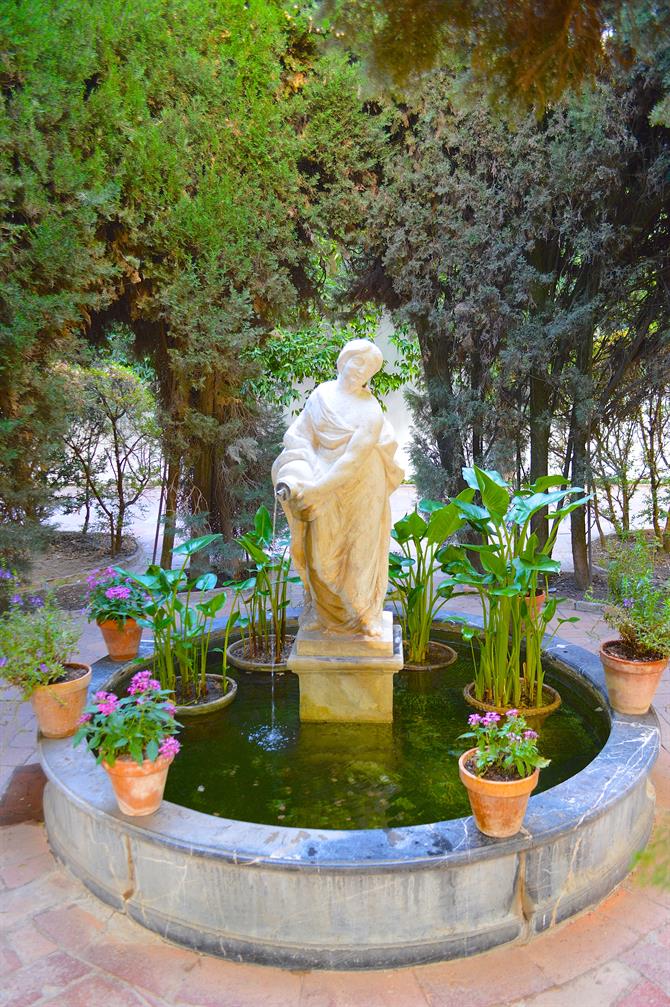
6. Patio de Columnas
The Patio de Columnas (Courtyard of the Columns) is the newest patio of the palace. It was added to the Palacio in the 1980s, when it was already a museum. It is a place meant to celebrate events such as concerts and plays.
7. The garden
The garden of the Palacio de Viana is very different from the patios: less polished, with more trees and and more green. It may not look as impressive, but after all those patios it is a nice change to see a 'wilder' side of nature. The hedges remind one of a French or English garden, but the citrus trees remind you that you are in a Southern country.
8. Patio de la Alberca
The Patio de la Alberca (Courtyard of the Pool) is a very modest patio with a small pool and a greenhouse. At first glance, it looks somewhat cluttered compared to the other patios, but that gives it an air of liveliness, as if at any moment the marquis' wife can come out and do some gardening.
9. Patio del Pozo
The Patio del Pozo (Courtyard of the Well) houses what used to be the most important feature of all of the patios: the well. Thanks to a underground stream, it could provide plenty of water for all of the patios and the garden. This is - like the Patio de la Alberca - a more practical patio, although some decorative elements were added to give the patio a more stately appearance.
10. Patio de los Jardineros
The Patio de los Jardineros (Gardeners' Courtyard) got its name because the gardeners used to keep their tools in this area. It's very clear that this patio was meant to be functional: there is a lot of open space, which allowed the gardeners to pass freely with any tools they might have needed for the day.
There aren't many decorations in this patio, but the tiled bench and tiled fountain against the left wall are beautiful examples of those tiles that are typical of Andalusia.
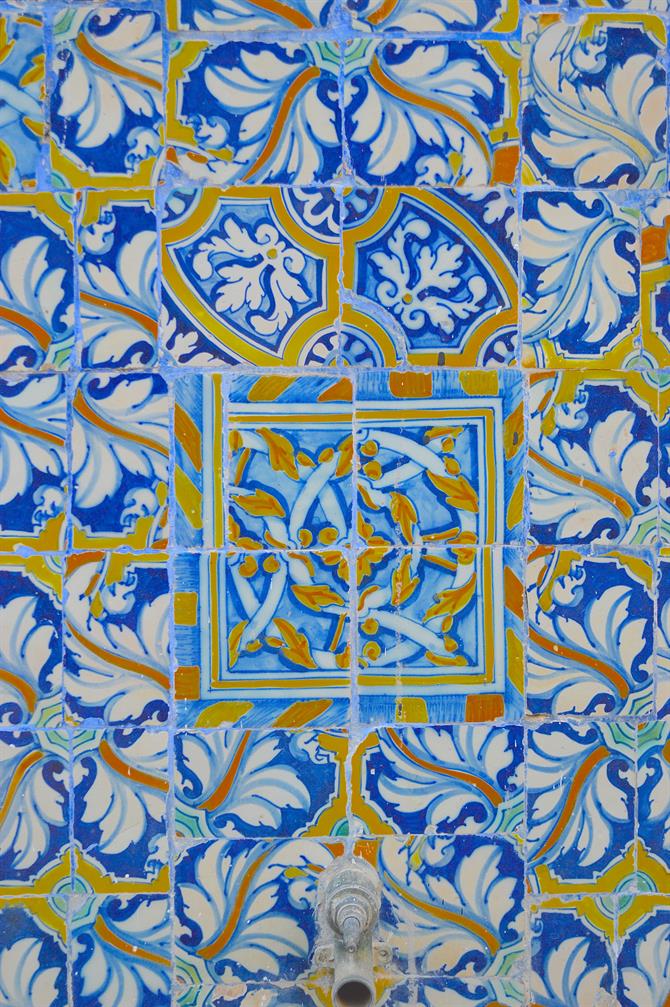
11. Patio de la Capilla
The Patio de la Capilla (Chapel's Courtyard) is probably the coolest patio of the Palacio - in the literal sense of the word. The gallery that runs along the outer walls and the various trees keep the patio cool on hot days.
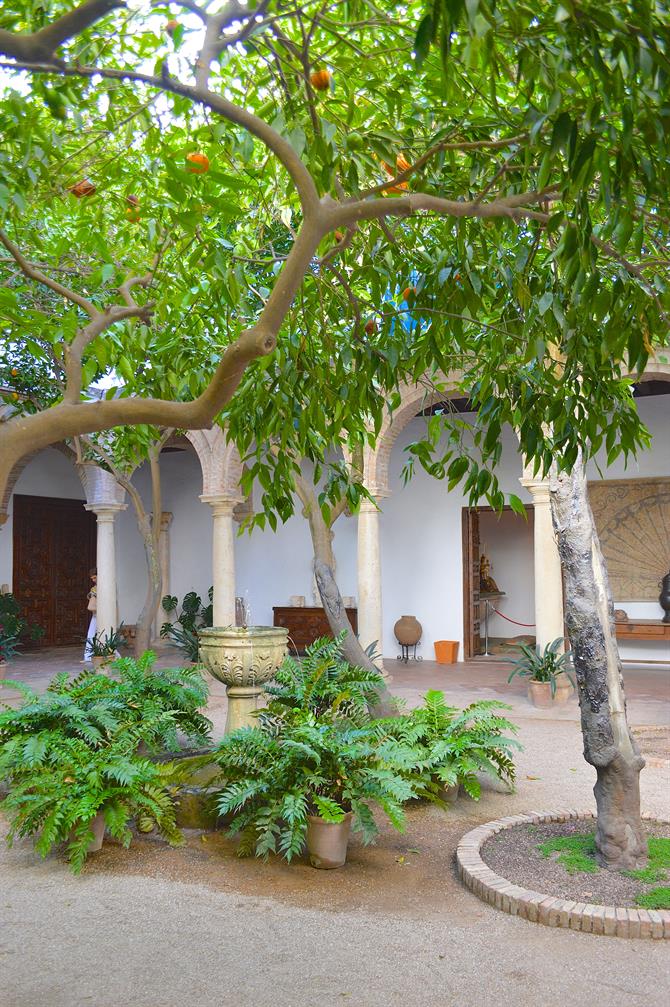
There are various archaeological artifacts adorning the walls of the gallery. This stems from the 19th century, when people liked to show their wealth by displaying archaeological finds. In the Palacio, they are mainly amphorae and mosaics, such as this beautiful mosaic of a hand fan.
12. Patio del Archivo
The Patio del Archivo (Archive's Patio) is a small patio in centre of the Palacio. Although it seems unimportant, this patio gives access to the Palacio's historical archive which is kept on the mezzanine. It is very valuable because it contains more than 300,000 documents dated between the 12th and 17th century, which have been studied by experts since 2000.
The patio itself was remodeled in a sober, Baroque style. The fountain with its beautiful tiles attracts your attention immediately, and because it is enclosed by the palace it is a very tranquil place to be.
13. Patio de la Cancela
The Patio de la Cancela (Courtyard of the Gate) is the last patio of the Palacio. Like the Patio de las Rejas, this courtyard can also be seen from the outside. The reason is that it used to be the entrance to adjoining houses, and it became part of the building when those houses were bought and incorporated into the palace. Its most distinct feature is the exposed brick decoration of the arches and pillars.
The Palacio de Viana will leave you in awe as you discover the beauty of its patios. It is a place where you can experience the Patio Festival all year long! So when you're in Cordoba, make sure to visit this amazing palace!
Practical information
The blooming of the plants. To know the time of the year during which plants and flowers are blooming, consult the website of the Palacio de Viana. They provide a blooming calendar for each patio.
Location. The Palacio de Viana is located at the Plaza de Don Gome in Cordoba, about 800 metres northeast form the Plaza de Tendillas.
Opening hours. The opening hours of the Palacio de Viana are different from the rest of the year during the summer months (keep that in mind when planning your visit so you won't be disappointed).
September - June
- Tuesday - Saturday: 10:00-19:00
- Sunday: 10:00-15:00
- Monday: closed
July - August
- Tuesday - Sunday: 09:00-15:00
- Monday: closed
If you are planning to visit the Palacio on a holiday, please check their website for the opening hours since they can be different.
Entrance fees. A visit to the patios will cost you €5. You can also take a guided tour of the patios and the interior of the palace for €8 (taking photos inside the palace is not allowed).
Tip. Consult the guide that you will get when buying your tickets. It doesn't only list the patios and a bit of information, there are also highlights of the patios: fun information and special places of the patios!
